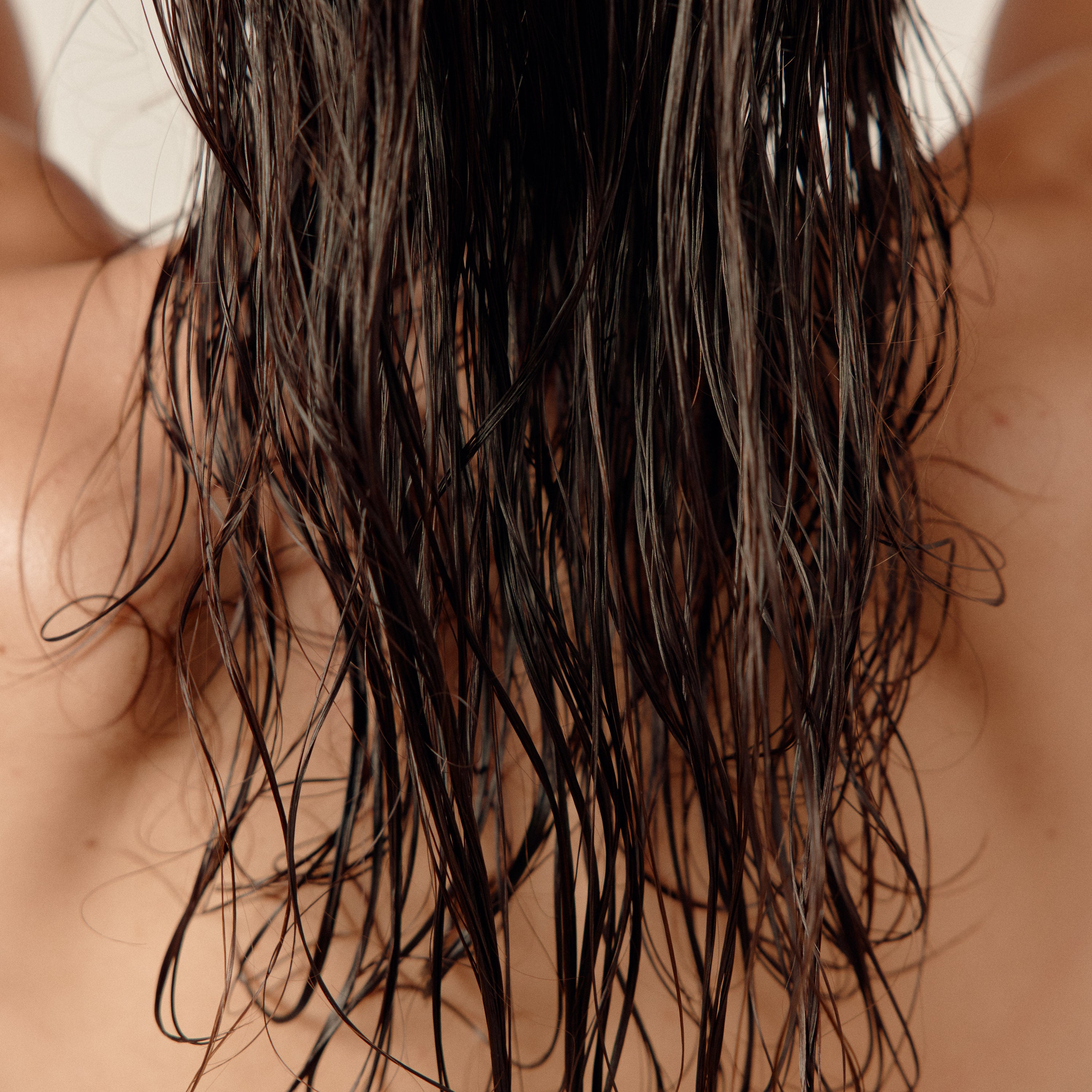
Female hair loss
Hair loss related
to Menopause
Menopause, a natural stage in a woman's life, causes many hormonal changes.
Among these changes, hair loss is a major concern.
[ 1 ]
Understanding the mechanisms
During menopause, it is very common to see hair density decrease… This is due to the decline in female hormones, particularly estrogen.
And our hair loves estrogen!
Estrogen, a female hormone, normally acts as a protective guardian for our hair. It prolongs its growth phase and forms a shield that protects hair follicles from hormonal stress.
But at menopause, this protection diminishes sharply. With less estrogen, a hormone called DHT (a derivative of testosterone) can now act more freely on our follicles. This DHT gradually shrinks and weakens hair follicles, causing widespread hair loss across the entire scalp.
[ 2 ]
The numbers
of menopausal women find that their hair becomes thinner, more fragile and brittle
of women are affected by androgenetic alopecia from the age of 50
Sources:
LaSanté.net. (nd). Menopause and hair loss. https://lasante.net/fiches-conseil/bien-etre/tracas-quotidien/menopause-chute-cheveux.htm
DermoMedicalCenter. (2024, September 5). Androgenetic Alopecia: Causes, Symptoms, Treatments . https://dermomedicalcenter.com/hair-and-hair-removal/androgenic-alopecia/
[ 3 ]
Recognize the signs
Type of hair loss: diffuse thinning of hair across the entire scalp, no clear bald spots as in men, hair that is finer, fragile and less thick, progressive decrease in density at the top of the head.
Causes: decrease in estrogen linked to menopause, increase in the sensitivity of follicles to DHT (androgen hormone).
Common Trigger: menopause.
[ 4 ]
TAKE BACK CONTROL
In the case of menopause-related hair loss, it is essential to stimulate the scalp daily to promote blood circulation . Good circulation helps extend the hair's life cycle and improve the health of the follicles.
Using a DHT blocker can also limit the negative impact of this hormone, by slowing the miniaturization of follicles and preserving hair density.
The HACT routine was designed specifically to address this type of issue.
YOUR TAILORED ROUTINE
[ 5 ]
A WORD FROM THE FOUNDERS

Marie & Julie
Founders of HACT
In summary
Link between menopause and hair loss

Decrease in female hormones
Gradual decrease in estrogen and progesterone

Hormonal imbalance
Relative androgen predominance: Loss of the protective effect of estrogen, increased sensitivity to testosterone

Conversion to DHT
Increased conversion of testosterone to dihydrotestosterone (DHT) causing progressive miniaturization of hair

Hair loss
Female androgenic alopecia: Diffuse thinning with widening of the central parting
















